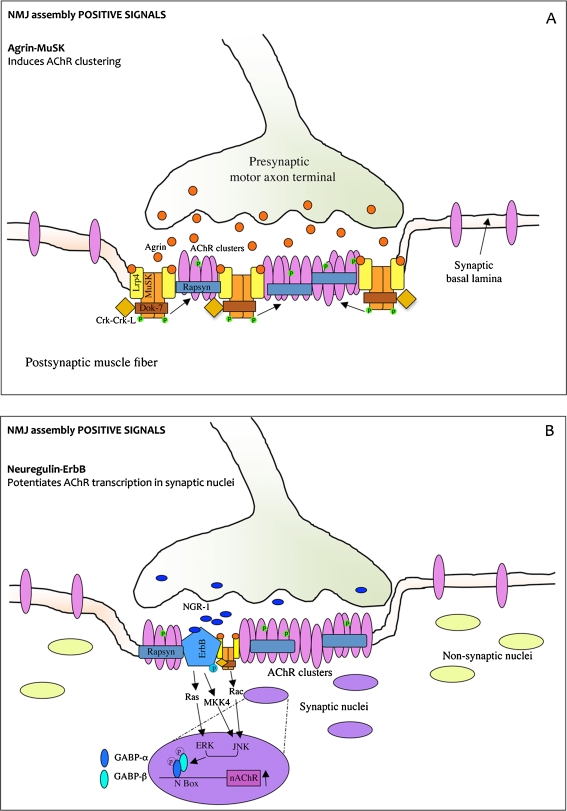Fig. 1.
The agrin–MuSK–Lrp4 and neuregulin–ErbB pathways induce NMJ assembly positive signals. a Agrin is released by the motor axon terminal and induces AChR clustering, phosphorylation, and stabilization at the postsynaptic membrane. Lrp4 associates with MuSK in the absence of agrin. Agrin binds to the preformed MuSK–Lrp4 complex by interacting with Lrp4 and promotes MuSK transphosphorylation and activation. Once phosphorylated, MuSK recruits the adapter protein Dok-7 which binds Crk and CrkL and stimulates further MuSK phosphorylation and kinase activity. This induces phosphorylation and stabilization of nascent AChR clusters. Rapsyn is a coeffector in AChR assembly which anchorates AChRs at the muscle membrane. b Neuregulin (NGR-1) is released by the nerve and induces AChR transcription in synaptic nuclei. NRG-1 acts by binding tyrosine kinases receptors ErbBs. ErbB phosphorylation induced by NRG stimulates ERK and JNK kinase activity which phosphorylates GABP-α and GABP-β transcription factors. GABP-α heterodimerizes with GABP-β and binds DNA at the N-box thereby enhancing transcription of AChR genes

